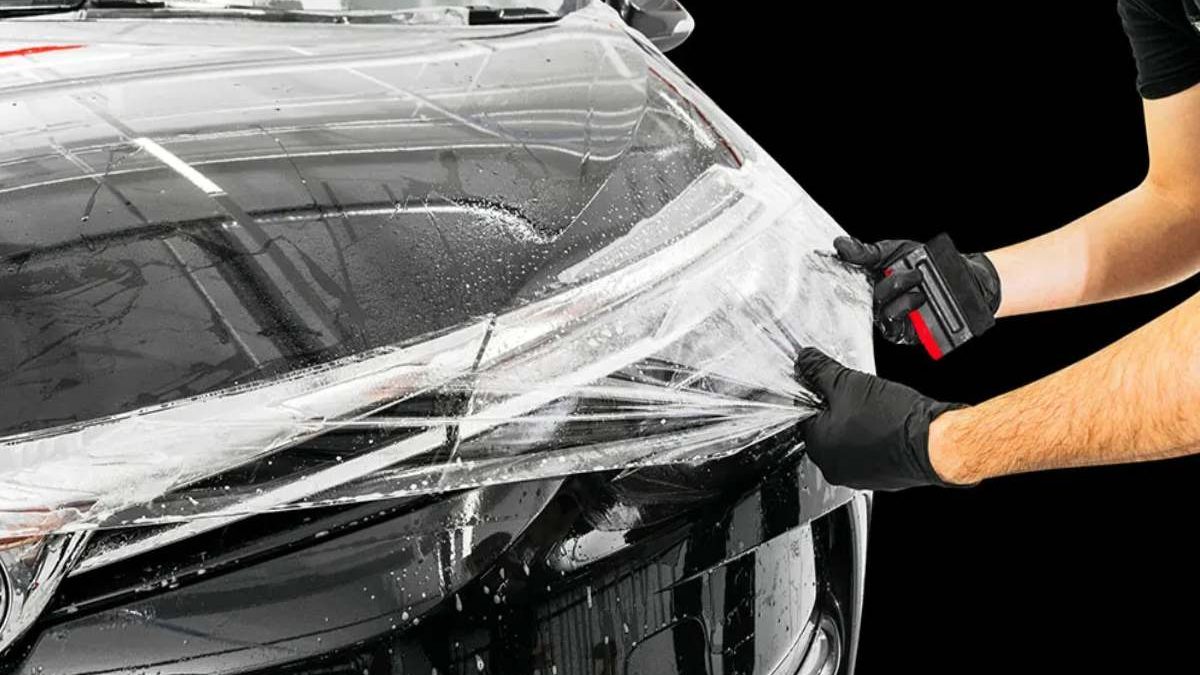The world of car care can be overwhelming, with countless products and services vying for your attention and hard-earned money. As a car owner, it’s not easy to discern the best way to maintain the appearance and value of your vehicle. Paint protection film (PPF) is one such product that promises to keep your car looking its best. But is it worth the investment? Keep reading here to understand what paint protection film is, the different types available, and the pros and cons of using it on your car.
Table of Contents
What is Paint Protection Film?
Paint protection film is a thin, transparent film made from thermoplastic urethane. It’s applied to the painted surfaces of your car to provide a protective barrier against scratches, chips, and other minor damage. It’s almost invisible once applied, preserving the original look of your vehicle while offering an additional layer of protection.
The concept of paint protection film originated in the military. It was used to protect helicopters and other vehicles from damage caused by debris and shrapnel. The automotive industry has since adopted and refined the technology, making it available for consumer vehicles.
The Different Types of Paint Protection Film
Several different types of paint protection film are available, each with unique properties. The three main types are clear bra, matte, and self-healing.
- Clear bra: The clear bra is the most common type of paint protection film. It’s transparent and glossy, designed to enhance the shine of your car’s paint while protecting it from damage.
- Matte: Matte paint protection film is similar to a clear bra but has a satin or matte finish. It gives your car a unique look while still providing protection.
- Self-healing: Self-healing paint protection film has a special top layer that can “heal” minor scratches and swirl marks. When the film is exposed to heat, it can smooth out these imperfections, making them less noticeable.
Pros of Applying Paint Protection Film on Your Car
There are several benefits to applying paint protection film on your car. Firstly, it provides an added layer of protection against scratches, chips, and other minor damage. It’s particularly useful if you frequently drive on rough roads or in harsh weather conditions.
Another benefit is that it helps preserve your car’s resale value. A vehicle with a well-maintained exterior is more appealing to potential buyers and can command a higher price.
Lastly, paint protection film is easy to maintain. It doesn’t require special care or maintenance; you can wash and wax your car normally.
Cons of Applying Paint Protection Film on Your Car
While paint protection film has many benefits, there are also some drawbacks. The main disadvantage is the cost. Paint protection film can be expensive, especially for a high-quality product and professional installation.
Another drawback is that paint protection film can become discoloured or yellow over time, particularly if exposed to the sun for extended periods. It can detract from your car’s appearance and may require replacing the film.
Lastly, while paint protection film can protect against minor damage, it can’t prevent all types of damage. For example, it won’t protect your car from major accidents or severe hail damage.
Paint Protection Film vs. Other Car Protection Options
There are other car protection options to consider besides paint protection film. These include ceramic coatings, wax, and sealants.
- Ceramic coatings: These provide a hard, durable layer of protection that lasts several years. They’re highly resistant to scratches, chemical damage, and UV rays. However, they’re also expensive and require professional installation.
- Wax and sealants: Typically, these are less expensive options that provide temporary protection. They need to be reapplied regularly to maintain their protective properties.
When comparing these options, it’s important to consider your budget, how much protection you need, and how much maintenance you’re willing to do.
How to Choose the Best Paint Protection Film for Your Car
Choosing the best paint protection film for your car depends on several factors. You’ll need to consider the type of film, the quality, and the installation process.
When it comes to the type of film, consider what you want your car to look like. If you want a glossy finish, opt for a clear bra. If you prefer a matte look, choose a matte film. If you want a film that can self-heal, go for a self-healing film.
The quality of the film is also important. Higher-quality films are more durable, less likely to discolour and offer better protection. However, they’re also more expensive.
Lastly, consider the installation process. Professional installation can ensure the film is applied correctly and without bubbles or wrinkles. However, it can also add to the cost. Some people install the film themselves to save money, but this can be difficult and time-consuming.
So, is paint protection film worth it? The answer depends on your specific situation and needs.
If you’re looking for a high level of protection and are willing to invest in a high-quality product and professional installation, paint protection film is worthwhile. However, if you’re on a tight budget or don’t require a high level of protection, other options like wax or sealants may be more suitable.
Ultimately, the decision is up to you. Consider the factors discussed in this article, weigh the pros and cons, and make the best decision for you and your car.


